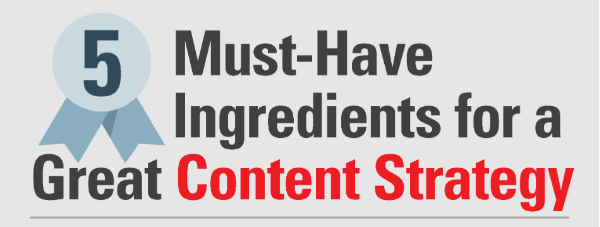
If you’re still struggling with establishing your content marketing strategy for 2019, you’re not alone. Only 12% of respondents to a recent survey by the Content Marketing Institute felt successful at their current efforts to strategically manage content. What’s particularly striking about this is that the vast majority of organizations surveyed – 91% – used content marketing to sell their products. Where’s the disconnect?
To help answer that question, I’ve collaborated with the folks at Oracle Marketing Cloud to create an infographic featuring 5 must-have ingredients for a great content marketing strategy. You can download the full infographic here.
We could talk about the talent gap or the technology gap, but I believe that content marketing success really comes down to five basic ingredients:
- Goals
- Operations
- Insights
- Architecture
- Measurement
With a clear grasp of these five elements, you’re well on your way to producing content that will get results. Here’s a closer look at each to understand how:
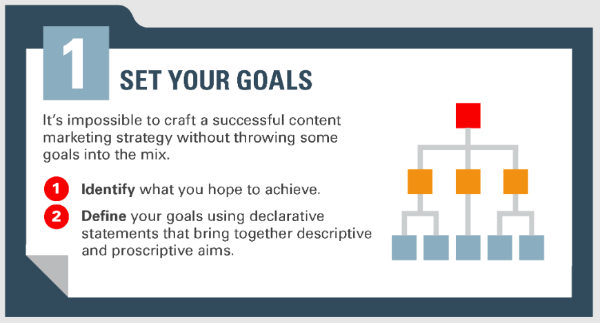
1. Strategy & Goals
Let’s face it: You can’t have a successful marketing strategy – content or otherwise – without knowing what you hope to achieve. You can define your goals using declarative statements that bring together descriptive and proscriptive aims. For example, a medical equipment manufacturer might want to increase revenue by 5% by raising awareness of its innovations among regional hospital chains that match buyer profiles of their best customers.
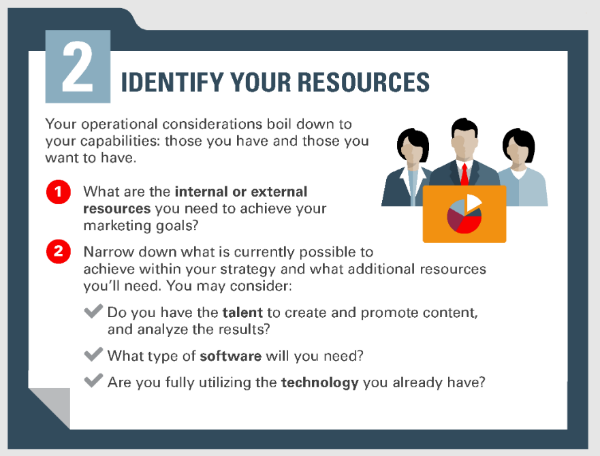
2. Operational Considerations
Operational considerations boil down to your capabilities: those you have, and those you want to have. What internal or external resources do you need to achieve your marketing goals? Do you have the talent in-house to create and promote content, and analyze the results, or do you have to look outside your organization? What type of software will you need? Are you fully utilizing the technology you already have? Answers to these questions will narrow down what is possible to achieve within your strategy and what additional resources you’ll need to bring on.
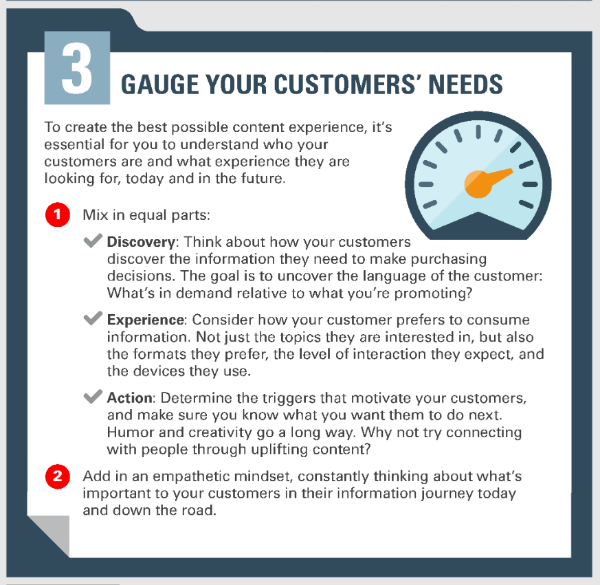
3. Customer Insights
Here we get to the heart of the matter. To create the best possible content experience, it’s essential that you understand who your customers are, and what they are looking for to drive ideation for content types, topics, and promotion. Crucial to this process is to work within an empathetic framework: What’s important to customers in their information journey?
This journey can be further broken down into discovery, experience, and action:
Discovery: How do your customers discover the information they need to make purchasing decisions? What search terms are they using? What forums or special interest groups do they belong to? What publications or newsletters do they subscribe to? What events do they go to? The goal is to uncover the language of the customer: What’s in demand relative to what you’re promoting. Keyword research is a great place to start, but you can expand on it by utilizing question research tools, such as StoryBase, SerpStat, and BuzzSumo. Successful content will answer these customer questions and lead them to the next step in their journey.
Experience: The next consideration is how your customer prefers to consume the information you provide – not just the topics they’re interested in, but the formats they prefer, the level of interaction they expect, and the devices they’ll be using. In the past few years, content has been trending away from two-dimensional text to the more visual and experiential. I believe this trend will pick up steam in 2019 with the addition of virtual and augmented reality.
In fact, the intersection of influencers and interactive has gained substantial momentum for many B2B companies we work with. Doing so actually satisfies two objectives. First, it’s a better experience for end users, because they see trusted people in an informative and entertaining format. Secondly, the influencers are inspired to share visually engaging and interactive content because it makes them look good.
Action: Finally, what are the triggers that motivate your customers to action? What do you want them to do after consuming your content? Here again, I’ve seen some recent shifts. Where B2B content marketers once used fear, uncertainty, or doubt to drive home their message, I’m seeing a lot more humor and creativity. B2B doesn’t have to stand for boring to boring. Try connecting with people on an emotional level, especially through something that can be a little bit uplifting.
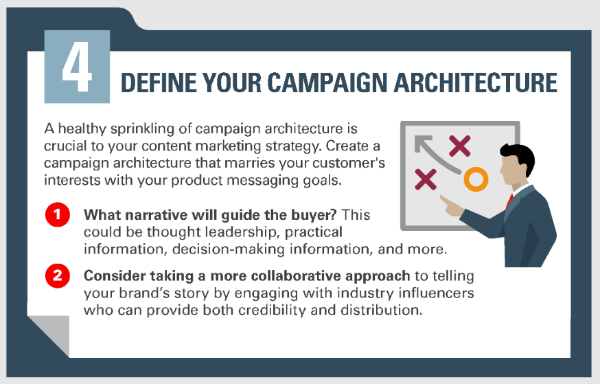
4. Campaign Architecture
Campaign architecture – or as I call it, story planning – is about identifying the topics your customer is interested in and then reconciling them with what you’re trying to promote. Think about what narrative (thought leadership, practical information, decision-making information) will guide the buyer to where you want them to go? To help tell the brand story, we’ve been taking a more collaborative approach by engaging with industry influencers who can provide credibility and distribution. We’ve also expanded the concept of who is an influencer by looking at internal experts, niche industry experts, and even prospects as subject matter experts.
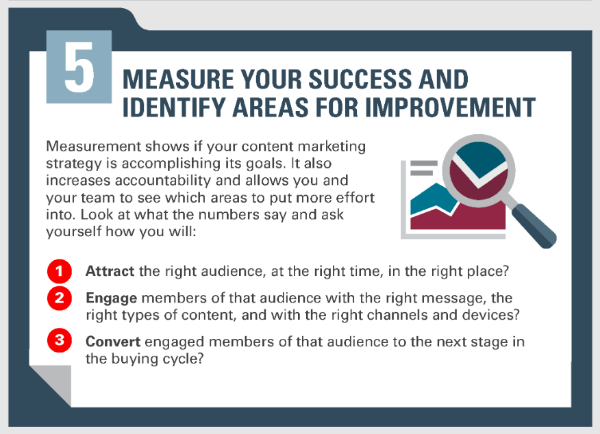
5. Measures of Success
Finally, of course, you must be able to measure the results of your campaign. For this, I recommend an attract/engage/convert model:
- To what degree are you attracting the right audience?
- How successful are you at engaging them in the right way and creating a great experience?
- What are the conversion metrics – newsletter subscriptions, downloads, trials, demos, or purchase – that will define success?
In the end, it’s essential to understand who your customers are, what they care about, and what their goals are relative to your products and solutions. Technology can help here, especially when it comes to analysis and surfacing insights that will drive content ideation. Best-in-class AI-supported systems can even help you make sense of all that information and surface new topics. Most importantly, customer insight is not a project. It is an ongoing effort.
Find out more about how to make your content relevant for your customers and how to catch their attention with “Writing and Winning in the Attention Economy.”
Download the full Content Marketing Strategy infographic here.
This post was originally published on the Oracle Modern Marketing Blog.

Comments are Closed